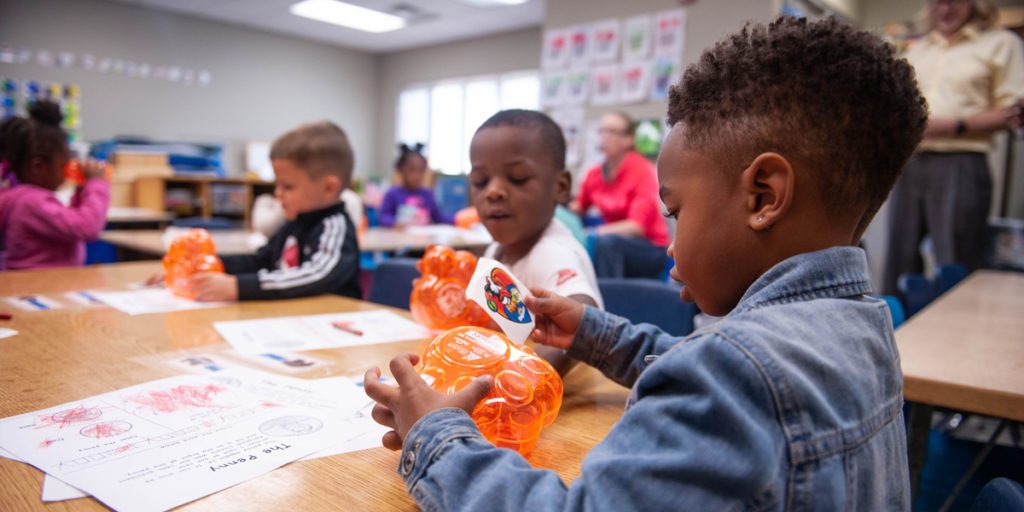
6 Banking Activities for Kids: Making Financial Literacy Fun

From games to $mart Quests to printables, we are constantly creating Money Mammal-themed banking activities for kids. These entertain and engage children early (elementary school or before) with topics aimed to provide financial education for kids. I think we’re long past the idea that kids are going to read long lines of text on a screen about a topic that can be pretty darn dull without a singing monkey, of course.
So whether your kids are already Money Mammals or you’re a teacher or other professional looking for a program with banking activities for kids (or even apps for kids) that can make an impact in your community, we have something for you. A word of caution, though. Some of this stuff can be pretty addicting. Watch some clips of The Money Mammals on our site to see what I mean.
Here are a few simple ideas:
For Parents:
Cash Transactions
When you go to the store next time, pay for your transaction in cash, and have your child collect the change. This is obviously for the younger kids, but it will help start a discussion about money and how it works. Let them keep the coins too. It’s important for them to see some physical cash exchanged since the use of an ATM card might seem like magic to them.
Start a Conversation
When you’re at the store, discuss the rationale behind each purchase, including whether it’s something the family needs or wants, the level of nutrition (Not everything has to be good for you; hello, ice cream!) and perhaps even the difference in cost between what you’re purchasing and a brand-name or generic item.
Family Goal Jar
At home, start a family goal jar to save for something you all might want. This could be money for an upcoming vacation, an electronic item or whatever the family might want but can do without right now. This will help kids start to learn about goals, delayed gratification and teamwork.
For Teachers:
Needs vs. Wants activity
Hand out two pieces of paper per child: one for a want and one for a need. Instruct the kids to draw a picture of a need and a picture of a want on each of the pieces of paper. Then invite them to bring up one or both of the items and explain why they drew what they did. It’s a good idea to introduce this lesson with a discussion about the key needs (things we all HAVE to have, such as clothing, food and shelter) as well as wants (things that we LIKE to have). The latter is pretty easy; just ask them if there’s anything they ever want when they go to the store. Hands will shoot up! When you go through the activity, you’ll likely encounter “conditional” needs, ones that are dependent on situation. As long as their logic is sound (e.g. You need a basketball to play hoops.), then let them go have some fun learning.
Setting goals
This one is easy and powerful and might even be better done at home. Have them set a saving goal, and make sure that it’s SMART (Specific, Measurable, Attainable, Relevant and Time based). Find some jars, have kids bring them in and have them paste their goals right on the jars. Tell them to put them somewhere they will see as often as possible. They may not fully understand the term, but tell them that they’re learning to “visualize” by doing this. You can even expand this conversation beyond money; setting goals is a powerful life skill.
Sharing money
Tell the kids a story about how you’ve helped in the community and/or donated to organizations that you think do good work. Lead a discussion about ways they can help out in the community. Hand out paper to each of them to write down or draw ways that they can see themselves helping or giving back.
Financial literacy is for every child, and most of the above examples are abridged versions of lessons you will find in our Money Mammals Teaching Kit. Another great resource for slightly more detailed but still simple activities for parents is available on the Thrive by Five site by CUNA. Don’t forget that as you provide financial education for kids, you should give them some autonomy to really learn those money-smart lessons.
Good luck with your lessons!
John
SOURCE: https://themoneymammals.com/6-banking-activities-for-kids-making-financial-literacy-fun/

